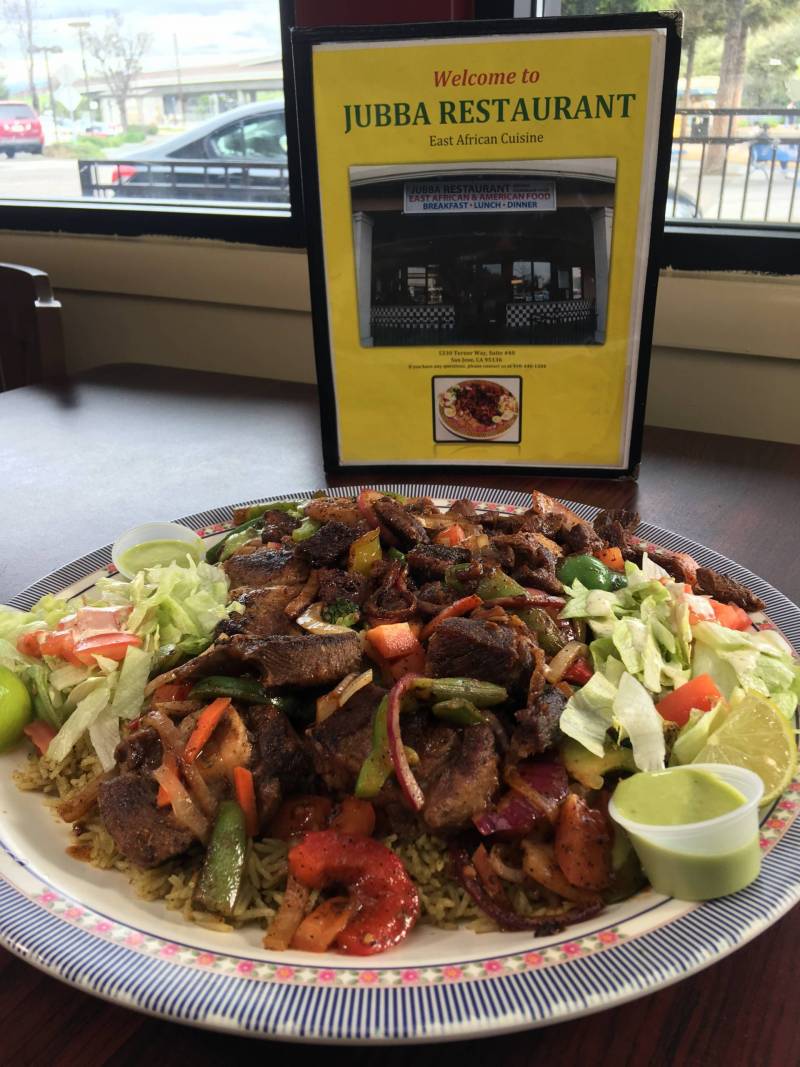
iStock
A starch paired with another starch is an already dubious inclination, but spaghetti laced with a berbere-fortified tomato sauce and served on injera is even more so. The two carbs, one splayed flat with the other piled in a nest on top, appear to be unnatural companions on a plate. Yet the occurrence of this pairing in Ethiopian restaurants and homes qualifies this as a dish worth considering. And that consideration leads to a conversation about colonialism.
Italy’s colonial interest in East Africa spread from present-day Eritrea, down the coast of the Red Sea to Somalia and inland to Ethiopia. From the late-19th century to the 1940s, these territories were seized, ruled or occupied. Italy’s monarchy, then its fascist regime, carried out massacres and the subjugation and segregation of people whose land they sought to make their own. If spaghetti appeared in this corner of the world before, this bloody period is one that guaranteed its stay.
In Somalia, a particular kind of spaghetti dish is ubiquitous. Those noodles are served with suugo suqaar, an often meat-enriched, xawaash-spiced tomato sauce. As with other savory dishes from the coastal nation, a banana is offered on the side to be peeled, chopped and distributed throughout the warmly-spiced pasta, adding both a sweet note and a different texture of starchiness.
In both East African iterations of spaghetti, the preparation and presentation firmly bend the Italian dish towards centuries-old local tastes. The interventions at play, of spices and other starches, have no allegiance to European techniques. This defiance tells a particular story about food’s movement across cultural and national margins. Appropriation is a mode of transit we see often lamented in cultural writing—an erasure of authorship often followed by manufacturing at a capitalistic pace and design. Spaghetti on injera or with suugo suqaar are born out of a different modality: the absorption of a cultural product introduced by abject violence and forced occupation.
There’s something about pasta’s bipartite composition of noodles and sauce that takes well to modifications and possibilities. There’s also what writer Hannah Giorgis called a “culinary rebellion” when she wrote about lasagna’s ubiquitous presence among a sea of indigenous fare at Eritrean and Ethiopian gatherings. As Giorgis described it, lasagna in East Africa is a richly spiced, conservatively cheesed version—all revisions that honor the local appetites. It’d be unfair to say all of these choices are political by intention.

At San Jose’s Jubba, the Bay Area’s only brick-and-mortar Somali restaurant, you’ll find a menu reflecting the country’s various influences that drifted in via its ports and trading partners. Blending flavors from South Asia, the Middle East and neighboring African nations, Italy’s coercive history in the region lives in the baasto suugo suqaar on the menu. Jubba’s version features tomato paste, tomato sauce, bell peppers, onions, garlic, cilantro and xawaash, a blend of aromatic spices including cinnamon, cumin and cardamom, among others. “It’s a really robust pasta,” said Jubba cook Antonio Gomez, who worked at an Italian restaurant kitchen before joining the kitchen at the South Bay eatery two years ago. “It’s unique. You don’t get that flavor in Italian pasta.”
Owner Amina Nur’s daughter, Leyla Mohamed, has her preferences when it comes to the dish, which can be served with beef, chicken or meat-free. “I like the tuna suugo and my family likes it with ground beef,” Mohamed said. Asked about the Somali’s transformation of Italian pasta, Mohamed sees it simply: “We like flavorful [food]. So it gives it extra flavor instead of it being plain.” Hence the spices, the banana and sometimes even a squeeze of lime juice.
The first instance of an injera-swaddled pasta bite likely came as a circumstance of the two things sharing a plate. A noodle slinking away into a bite of injera and wot. Now, this combination is something that can be ordered at a restaurant where pasta shares equal real estate with native stews and greens on one platter. Suugo with pasta similarly shares a plate and flavor profiles with Somali-born dishes.
The source of pasta of course can never be obfuscated and that isn't a righteous venture. The casual way that pasta dishes in East Africa are enjoyed, their juxtapositions of starches and histories, don't rely on that rememberance. Rather historical harms are inoculated from the plate by the imposition of local preferences on foreign ingredients.
October 02, 2020 at 10:00PM
https://ift.tt/3n6A0Tk
How Colonialism Brought a New Evolution of Pasta to East Africa - KQED
https://ift.tt/31oM9uv
Pasta
No comments:
Post a Comment